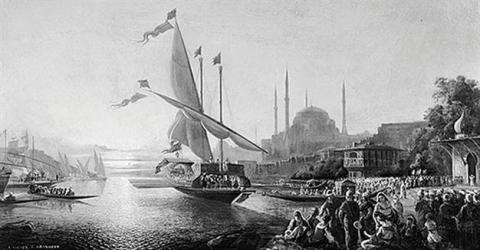INTERVIEW: Cem Emrence on three Ottoman paths to modernity

With the centenary of the First World War and the current turbulence in the Middle East, the fall of the Ottoman Empire has been receiving more attention in recent years.
"Remapping the Ottoman Middle East: Modernity, Imperial Bureaucracy and Islam" by scholar Cem Emrence (reviewed in HDN here) is an original look at the longer process of Ottoman modernization that came to an end with the empire's collapse. Unlike popular "unified" theories of causes for modernization, Emrence describes a model of "three-trajectories": The coast, the interior, and the frontier, which each followed distinct paths to modernity.
Emrence spoke to the Hürriyet Daily News about what his work can teach us about the Ottoman Empire, Turkey, and the wider region today.
Your book focuses the Ottoman Empire's modernization in the 19th century. Could you give a basic overview of the three-trajectory model that you apply?
I suggest that the Ottoman Middle East was characterized by three regional trajectories: The coast, the interior and the frontier. These trajectories represented distinct routes to state centralization on the one hand and economic integration on the other.
The coastal trajectory primarily means Western Anatolia and the East Mediterranean littoral. These regions were characterized by global economic flows and they were under the leadership of non-Muslim middle classes. In the interior - which included Anatolia, Syria and Palestine - it was a different story. Ottoman state building efforts were at the center of these regions' transformations and a Sunni Muslim bloc held the leadership position. In the frontiers - Iraq, the Arabian Peninsula and Eastern Anatolia - geopolitical competition played a central role. Rural and religious...
- Log in to post comments
